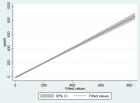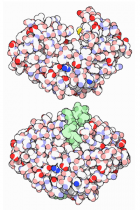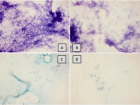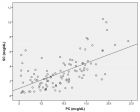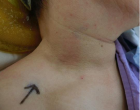About Manchester Medical Society
Manchester Medical Society
Articles by Manchester Medical Society
Atypical manifestations of pulmonary embolism
Published on: 16th April, 2020
OCLC Number/Unique Identifier: 8582359318
Pulmonary embolism (PE) is an age-related disorder which is potentially fatal, but frequently misdiagnosed. However, the true prevalence of pulmonary embolism is unknown. Inaccurate estimates of PE prevalence might, in part, be attributable to underrecognition of atypical presentations of this disorder. If true prevalence is unknown, the positive predictive values of both typical and atypical symptoms and signs of PE will be unreliable. The negative predictive value of those parameters will, likewise, be unreliable. The aim of this review is to make clinicians more aware of atypical manifestations of PE, thereby increasing the likelihood of correct diagnosis and, hence, ascertainment of the true prevalence of PE. The range of atypical manifestations was explored by a literature search, using MEDLINE from 1946 to February 2019, and EMBASE, from 1947 to February 2019, and Pubmed, from February 2014 to February 2019, using the search terms atypical, uncommon, unusual, pulmonary embolism, lung embolism, pulmonary thromboembolism.
This search revealed atypical presenting features such as non pleuritic retrosternal pain, abdominal pain, atypical breathing patterns, pulmonary oedema, Dressler’s syndrome, atypical radiographic manifestations, atypical electrocardiographic features, manifestations associated with oxygen saturation of 95% or more, coexistence of acute myocardial infarction and pulmonary embolism, coexistence of thoracic aortic dissection and pulmonary embolism, neurological manifestations other than stroke, paradoxical embolism, acute venous thrombosis of atypical location, and pulmonary embolism with normal D-dimer levels.
Clinical characteristics in STEMI-like aortic dissection versus STEMI-like pulmonary embolism
Published on: 31st July, 2020
OCLC Number/Unique Identifier: 8660373629
Dissecting aortic aneurysm with ST segment elevation, and pulmonary embolism with ST segment elevation are two of a number of clinical entities which can simulate ST segment elevation myocardial infarction.
Objective: The purpose of this review is to analyse clinical features in anecdotal reports of 138 dissecting aortic aneurysm patients with STEMI-like presentation, and 102 pulmonary embolism patients with STEMI-like presentation in order to generate insights which might help to optimise triage of patients with STEMI-like clinical presentation.
Methods: Reports were culled from a literature search covering the period January 2000 to March 2020 using Googlescholar, Pubmed, EMBASE and MEDLINE. Reports were included only if there was a specification of the location of ST segment elevation and an account of the clinical signs and symptoms. Search terms were “ST segment elevation”,”aortic dissection”, “pulmonary embolism”, “myocardial infarction”, and “paradoxical embolism”. Fisher’s exact test was utilised for two-sided comparison of proportions. Proportion was calculated for each group as the number of patients with that parameter relative to the total number of patients assessed for that parameter.
Findings: There were 138 patients with aortic dissection, 91 of whom were either fast-tracked to coronary angiography (81 patients) or fast-tracked to thrombolytic treatment (10 patients). There were 47 patients managed with neither of those strategies. There were 102 patients with pulmonary embolism, 71 of whom were fast tracked to coronary angiography, and 31 who did not receive that evaluation. Compared with their dissecting aortic aneurysm counterparts, those dissecting aortic aneurysm patients initially managed by percutaneous coronary intervention or by thrombolysis were significantly (p = 0.0003) more likely to have presented with chest pain, and significantly (p = 0.018) less likely to have presented with breathlessness. The preferential fast-tracking to coronary angiography prevailed in spite of comparable prevalence of back pain in fast tracked and in non-fast tracked subjects. Use of transthoracic echocardiography was also comparable in the two subgroups of dissecting aortic aneurysm patients. Pulmonary embolism patients fast tracked to percutaneous coronary intervention were significantly (p = 0.0008) more likely to have presented with chest pain than their pulmonary embolism counterparts who were not fast-tracked. The prevalence of paradoxical embolism was also significantly (p = 0.0016) higher in fast-tracked patients than in counterparts not fast-tracked. Cardiac arrest was significantly (p = 0.0177) less prevalent in fast-tracked pulmonary embolism patients than in pulmonary embolism patients who were not fast-tracked. Preferential fast-tracking to coronary angiography prevailed in spite of the fact that prevalence of documented deep vein thrombosis was comparable in fast-tracked subjects and in subjects not fast-tracked. The prevalence of use of transthoracic echocardiography was also similar in fast-tracked pulmonary embolism patients vs counterparts not fast tracked. Overall, however, transthoracic echocardiography had been utilised significantly (p = 0.007) less frequently in dissecting aneurysm patients than in pulmonary embolism patients.
Conclusion: Given the high prevalence of STEMI-like presentation in aortic dissection there is a need for greater use of point-of-care transthoracic echocardiography to mitigate risk of inappropriate percutaneous coronary intervention(which might delay implementation of aortic repair surgery) and inappropriate thrombolysis(which might precipitate hemorrhagic cardiac tamponade) (75) during triage of patients presenting with ST segment elevation simulating ST segment elevation myocardial infarction (STEMI). Furthermore, during triage of patients with STEMI-like clinical presentation, the combined use of point-of -care echocardiography and evaluation for deep vein thrombosis will facilitate the differentiation between acute myocardial infarction, STEMI-like aortic dissection, and STEMI-like pulmonary embolism. Among STEMI-like patients in whom DAA has been ruled out by point of care TTE, fast tracking to PCI might generate an opportunity to identify and treat paradoxical coronary artery embolism by thrombectomy. Thereby mitigating the mortality risk associated with coronary occlusion. Concurrent awareness of PE as the underlying cause of paradoxical embolism also generates an opportunity to relieve the clot burden in the pulmonary circulation, either by pulmonary embolectomy or by thrombolysis. Above all, frontline clinicians should have a greater awareness of the syndrome of STEMI-like presentation of aortic dissection and STEMI-like pulmonary embolism so as to mitigate the risk of inappropriate thrombolysis and inappropriate percutaneous coronary angiography which seems to prevail even in the presence of red flags such as back pain (for aortic dissection) and deep vein thrombosis(for pulmonary embolism).

If you are already a member of our network and need to keep track of any developments regarding a question you have already submitted, click "take me to my Query."







